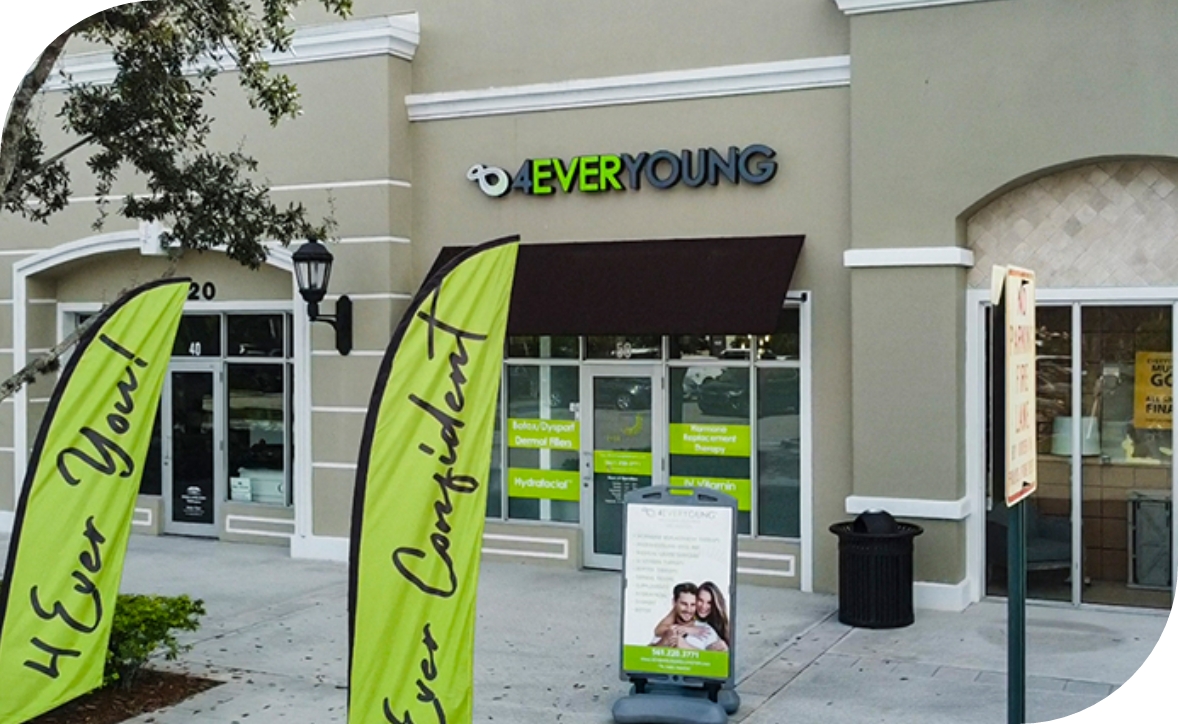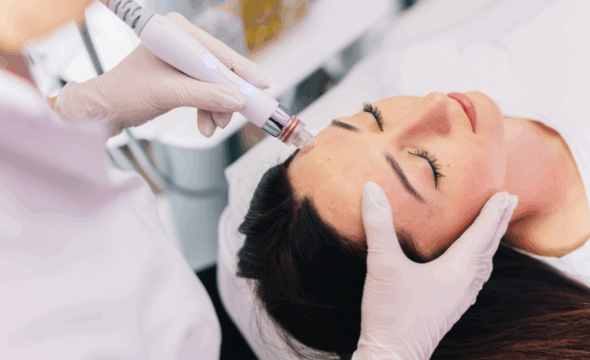Morpheus8 Recovery Time and Aftercare: A Complete Guide
Undergoing a Morpheus8 RF facial can be a transformative experience for your skin, but it’s essential to know what to expect after you step out of the treatment room. Most people feel excited and hopeful, but the days immediately after can be surprising if you don’t know what’s normal. Knowing what to expect after Morpheus8 can help reduce anxiety and make you feel more in control. Understanding each stage of recovery will also help you follow the right aftercare to avoid problems and boost your results.
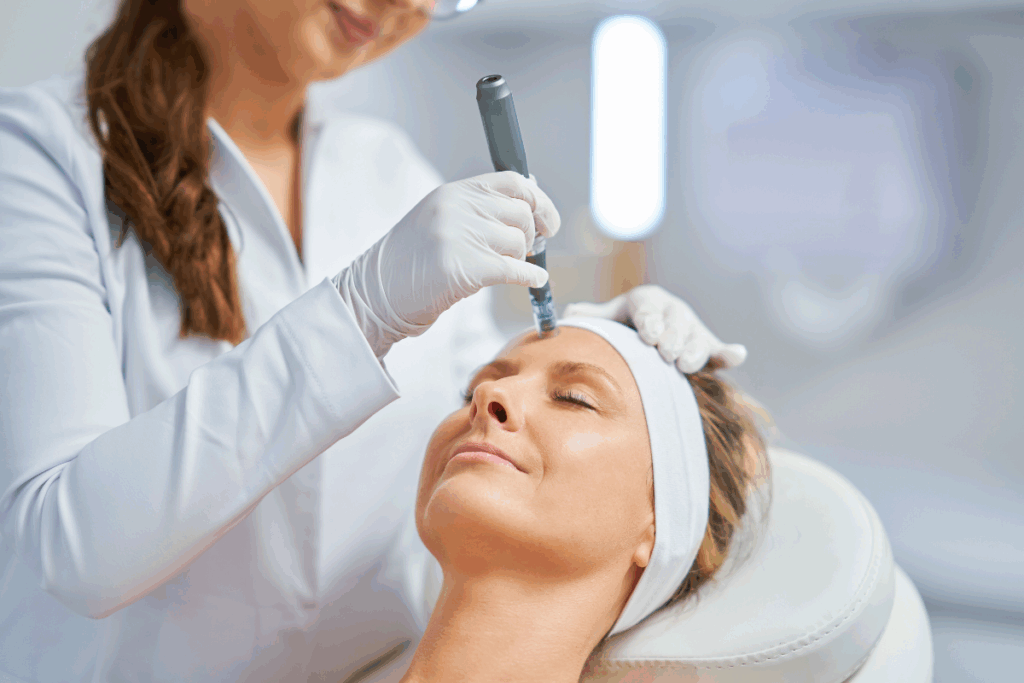
What to Expect After Morpheus8: Post-Treatment Effects and Recovery Timeline
Understanding the recovery journey after Morpheus8 can help you feel more confident and prepared. Here’s a clear, day-by-day breakdown of what you can expect in the days and weeks following your treatment, so you know what’s normal and when your results will start to show. Proper aftercare is crucial for maximizing the benefits of your Morpheus8 treatment and ensuring a smooth, comfortable recovery.
Immediate Post-Treatment Phase (0–24 Hours)
Common Reactions
Within the first few hours after your session, it’s completely normal to notice redness that resembles a sunburn. Swelling may occur, particularly around sensitive areas such as the eyes or cheeks. Many people also report a lingering warmth in the treated zones. These reactions are expected and are part of your body’s natural healing mechanisms. The warmth results from increased blood flow, which helps with tissue repair and collagen remodeling. As part of your Morpheus8 post-procedure, these signs usually subside by the next day.
Managing Serum Weeping
Gently dabbing the area with sterile gauze can help absorb moisture without irritating the skin. Avoid rubbing or applying pressure, as that can interfere with the skin’s natural closure process. For those unfamiliar with microneedling care tips, this step is crucial in maintaining clean skin while promoting uninterrupted healing. Try not to panic if you see spots of blood; they are surface-level and usually fade within several hours. Avoid washing your face for at least 12 hours unless instructed otherwise by your provider. After that, use a gentle, non-foaming cleanser free from harsh chemicals, fragrances, or alcohol. Pat dry with a soft towel. This first cleanse should focus on removing excess serum and sweat without stripping the skin’s barrier. Using the wrong products at this stage can cause stinging or even delay the recovery process. For effective post-Morpheus8 care, steer clear of scrubs and active ingredients. Maintaining a basic routine in the first 24 hours is the safest approach.
Comfort Tips
To ease any swelling or discomfort, apply a cold compress wrapped in a clean cloth. Short sessions of 10 to 15 minutes can soothe the skin without risking damage to its fragile surface. Elevating your head while sleeping or resting helps reduce puffiness. Avoid tight pillows that press into the treated area. Simple comforts can go a long way in supporting your Morpheus8 aftercare plan. Be mindful not to scratch or touch your face frequently, as even minor pressure can disrupt the early healing environment.
Early Healing Days (Days 1–5)
The “Sandpaper” Texture Phase
It’s common for your skin to take on a reddish tone known as erythema during the first few days. This is a sign that inflammation is reducing and the repair process is active. Many people also describe their skin as feeling rough or grainy. This texture comes from micro-injuries that are slowly healing. As part of the Morpheus8 healing process, these sensations indicate that cell turnover and tissue remodeling are beginning.
Maintaining Skin Hydration
Using rich, fragrance-free emollients helps protect the outer layer while preventing flaking and tightness. Look for products that contain ceramides or fatty acids, which reinforce the barrier without clogging pores. Integrating these products into your skin care after Morpheus8 ensures comfort while also reducing visible peeling. Apply with clean hands and avoid overdoing it.
Late Healing and Remodeling Stage (Days 6–30)
Resuming Gentle Skincare
Redness fades and texture gradually smooths out by the end of your first week. It becomes safe to reintroduce a more structured skincare routine. Choose gentle, non-comedogenic products that won’t clog pores or irritate the surface. If you choose to wear makeup, opt for breathable, mineral-based formulas that support healing rather than masking it. Reintroducing these items slowly is essential for sustainable recovery. Your approach to caring for treated skin can now make the difference between average and exceptional results.
Collagen and Elastin Synthesis
Around the two-week mark, the production of collagen and elastin begins to increase, laying the foundation for long-term improvements. The full benefits often take up to three months to develop. The underlying changes during this stage are vital for achieving your desired Morpheus8 results. Staying consistent with care will ensure the results continue to evolve.
Supportive Therapies
Low-level LED light therapy has been shown to reduce inflammation and stimulate tissue regeneration, making it a great complement. Lymphatic drainage massages can help reduce lingering puffiness and promote toxin release. These sessions aren’t mandatory but are often recommended for those seeking faster healing or dealing with stubborn swelling. Incorporating these sessions enhances your healing process by supporting circulation and soothing the skin naturally.
Managing Morpheus8 Side Effects and Complications
Numbness, Bruising, Milia
Temporary numbness can occur if the radiofrequency energy reaches deeper tissue levels and may last anywhere from a few days to a couple of weeks. Minor bruising, particularly along the jawline or neck, is not unusual. White bumps known as milia may develop as the skin regenerates. These often clear up without intervention, but professional extraction may be needed in some cases. If you’re treated at a top Morpheus8 provider, they will discuss these possibilities with you beforehand and guide you through how to manage them properly.
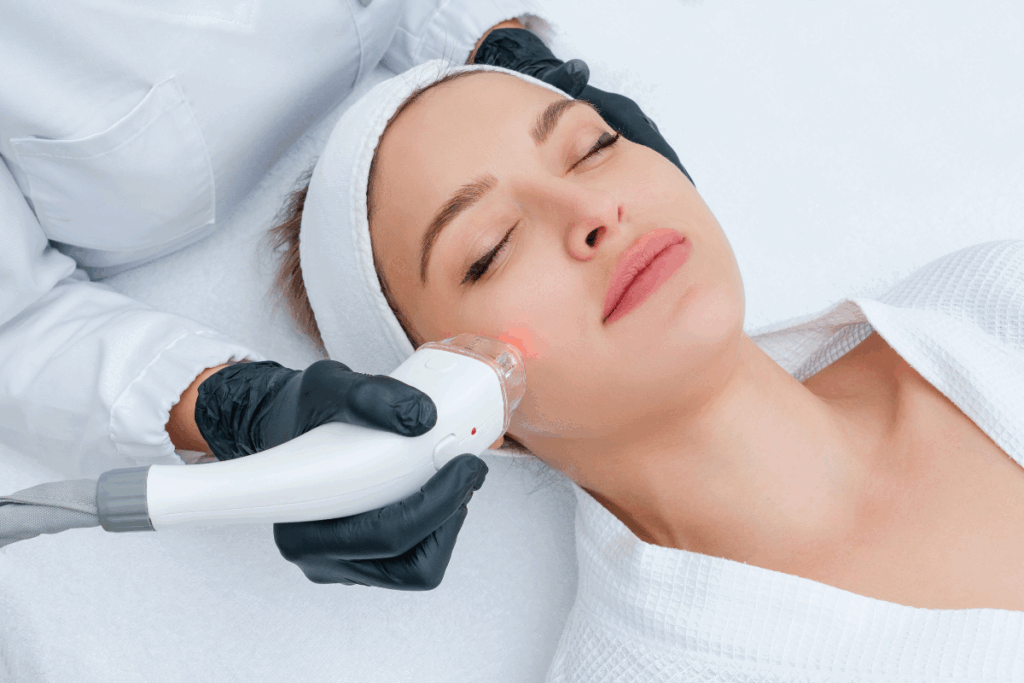
When to Contact Your Provider
While most symptoms are harmless and resolve quickly, certain symptoms may signal an abnormal or even dangerous reaction that requires immediate medical attention. Here are key warning signs that you should watch out for:
- Persistent Swelling: Mild swelling is a common and expected response, typically appearing within the first 24–48 hours and gradually improving over several days. Swelling that worsens beyond the third day can be indicative of an infection. This may occur when the skin’s barrier is compromised, leading to fluid buildup or an immune response. The swelling may be accompanied by tightness or heat in the area. If the area continues to enlarge or spreads beyond the initial treatment zone, these are signs that go beyond routine healing.
- New or Worsening Pain: Such symptoms may suggest a developing infection beneath the surface. In some instances, the pain may become sharp, throbbing, or localized to a specific region, indicating deeper tissue irritation. Pain that interferes with sleep or daily activities should not be overlooked.
- Yellow, Green, or Foul-Smelling Discharge: The appearance of yellow or green pus, or any discharge with a foul odor, typically points to bacterial colonization. This is a red flag that the skin’s healing process has been disrupted and that microbial growth has taken hold. If you detect unusual fluid, especially in increasing amounts, it’s critical to clean the area gently and contact your provider immediately. Ignoring these signs may lead to further complications, including abscess formation or delayed skin recovery.
- Sudden Onset of Fever or Chills: A sudden onset of fever or chills may signal a more serious issue. Chills and body aches often accompany the fever and may be felt before other signs become visible. When combined with localized symptoms, such as discharge or worsening swelling, the likelihood of a post-procedure infection increases significantly.
Staying informed and attentive during the recovery process empowers you to act swiftly and confidently when something doesn’t feel right. Your involvement in recognizing unusual symptoms and reaching out to your Morpheus8 specialist ensures the best possible outcomes.
Lifestyle Triggers to Avoid
Avoid hot showers and strenuous exercise during the first week. Refrain from smoking and drinking alcohol, as both impair circulation and tissue recovery. Being aware of these external influences and actively avoiding them is a key part of your Morpheus8 aftercare strategy. Protecting your skin from preventable damage is just as important as applying the right products.
How to Protect Skin to Prevent Friction
Sleeping on your side or stomach can cause unnecessary pressure on treated areas, especially if the procedure was performed on your cheeks or jaw. It’s best to sleep on your back with your head slightly elevated for the first several nights. Use a silk or satin pillowcase to minimize surface friction and reduce the chance of irritation or product absorption into your bedding. Even subtle rubbing can delay healing or lead to uneven texture.
Planning and Long-Term Care for Optimal Results
Essentials to Prepare
By following a focused set of guidelines in the days leading up to your session, you give your skin the best chance to respond well to the procedure and heal efficiently afterward. Below are key preparations:
- Discontinue Exfoliants and Retinoids: Using them too close to your Morpheus8 appointment can lead to over-exfoliated or compromised skin. Discontinuing them 5–7 days in advance allows the skin barrier to recover and ensures your skin is not overstimulated before the procedure. Refraining from these products is a small but significant step that supports a healthier response to the treatment and lowers the chances of adverse side effects like peeling or burning.
- Avoid Sun Exposure and Tanning: Ultraviolet radiation causes skin cells to go into repair mode, making them more reactive to treatments. Tanned or sun-damaged skin is also more prone to developing hyperpigmentation or post-inflammatory marks when exposed to microneedling and thermal energy. It’s essential to avoid direct sunlight, wear high-SPF sunscreen daily, and skip tanning entirely for at least a week before your procedure. Wearing protective clothing and seeking shade during outdoor activities is equally important. If you’ve recently been in the sun and notice redness or sensitivity, inform your provider beforehand.
- Stay Well Hydrated: Drinking plenty of water the day before and the morning of your Morpheus8 session helps keep your skin plump, resilient, and ready to tolerate microneedling more comfortably. Dehydrated skin is more prone to irritation, slower healing, and less optimal results. Aim to drink at least eight glasses of water in the 24 hours leading up to your appointment, and continue to sip water the morning of your visit.
- Avoid Alcohol and Caffeine: Both alcohol and caffeine can affect your vascular and nervous systems in ways that are not ideal before a microneedling and radiofrequency procedure. Alcohol acts as a vasodilator, which can increase redness and bruising during and after treatment. It also dehydrates the body and thins the blood, which may impair healing or intensify swelling. Caffeine, on the other hand, is a stimulant that can make you feel jittery, heighten sensitivity, and elevate blood pressure. To reduce the risk of unwanted side effects, it’s recommended to abstain from both substances for at least 24 hours prior to your appointment.
- Consult Your Provider About Medications: These medications interfere with normal clotting responses and may result in more pronounced side effects, especially when tiny needles and radiofrequency energy are involved. Your provider will assess the potential impact of these medications and may recommend temporarily pausing or adjusting dosages in coordination with your primary care doctor if necessary. Never stop any prescribed medication without proper medical guidance. Being transparent ensures your treatment plan is both safe and tailored to your health needs.
Each preparatory step may seem small, but together they create the ideal conditions for a smooth procedure. With thoughtful attention to these guidelines, you’ll enter your treatment with confidence and set yourself up for a faster, healthier recovery.
Monthly Maintenance Tips
Take clear photos of your skin before and after your session to track progress. This helps you see improvements that might be too subtle to notice daily. Keeping a journal of your skincare routine, including products used and any changes, is also helpful for your provider during follow-ups. Regular check-ins allow you to get professional input and adjust your plan as needed. Staying proactive about your skin health demonstrates your commitment to maintaining the benefits of your RF facial well into the future.
When to Book Follow-Ups
After your initial series, touch-up appointments every six months to a year help maintain your results. Your skin will continue aging naturally, so keeping up with maintenance ensures that gains from earlier treatments aren’t lost. Make sure to schedule these appointments in advance. When working with the best Morpheus8 clinic, your provider will recommend a schedule tailored to your skin concerns and goals. Sticking to a maintenance plan keeps your skin looking firm, radiant, and rejuvenated over time.
Frequently Asked Questions: Morpheus8 Aftercare
Use this section to quickly find trusted guidance on managing side effects, safe products, and when to seek help.
1. What side effects should I expect after Morpheus8?
Redness, mild swelling, and tenderness are normal and usually resolve within a few days. Some people may notice temporary bruising or a sandpaper-like texture during the early stages of healing.
2. How do I reduce redness and swelling?
Apply a cold compress wrapped in a clean cloth for 10–15 minutes. Elevate your head when resting and avoid touching or scratching the treated area.
3. Which skincare products are safe to use after treatment?
Use gentle, fragrance-free cleansers and moisturizers with ceramides or fatty acids. Avoid exfoliants, retinoids, or alcohol-based products until your provider says it’s safe.
4. When can I start wearing makeup again?
Wait at least 48–72 hours before applying makeup. Choose lightweight, mineral-based formulas and always use clean brushes to prevent irritation or infection.
5. When should I contact my provider after Morpheus8?
Contact your provider if you notice worsening swelling after three days, severe pain, yellow or green discharge, fever, or chills, as these may indicate an infection.
6. Is numbness or white bumps (milia) normal?
Temporary numbness or small white bumps can occur and usually resolve on their own. If symptoms persist or worsen, consult your provider for further evaluation.
7. Can I use LED light therapy or lymphatic massage after Morpheus8?
Low-level LED therapy and gentle lymphatic massage may help with healing, but always consult your provider before starting any supportive therapies.
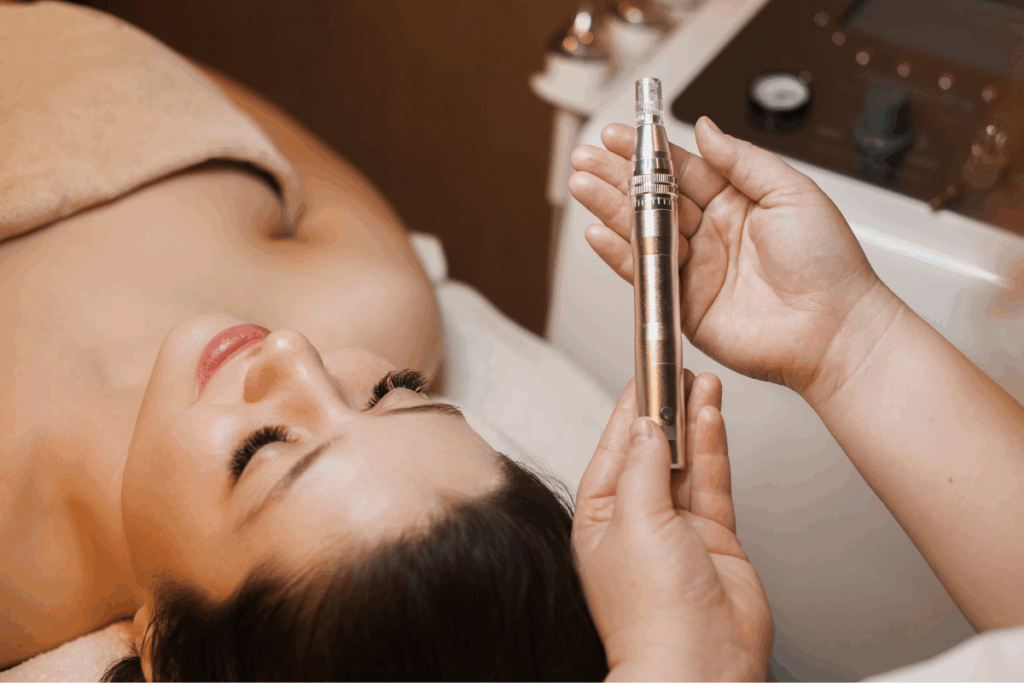
Remember, staying attentive to your skin’s response and reaching out to your provider with any concerns ensures the best possible outcome. Proper aftercare and timely troubleshooting are key to achieving smooth, healthy results from your Morpheus8 treatment. Achieving the best possible results from your treatment doesn’t stop at the clinic door. Equally important are the lifestyle habits you choose to maintain. A balanced diet and avoiding harmful triggers like smoking all contribute to better long-term outcomes. When you consistently follow these steps, the improvements from your session become more long-lasting.



